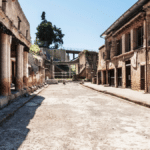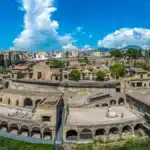Herculaneum’s remarkable preservation beneath the volcanic ash of Mount Vesuvius offers a wealth of exploration and observation.
There are many fascinating sites like detailed floor mosaics and some intricate wall frescoes.
Find the details of the must-see sites within Herculaneum below.
Note: Most artifacts discovered within the rooms and structures have been relocated.
Some can be found in the small on-site museum, making it a worthwhile visit. Many others have been transported to the Naples Archaeological Museum.
Skeletons
At the opening of the port, over 300 skeletons of males were found, indicating an attempt to flee the endangered city.
Some other skeletons of Women and children were also found in homes.
It is believed that the men attempted to secure passage for their families but, tragically, never made it.
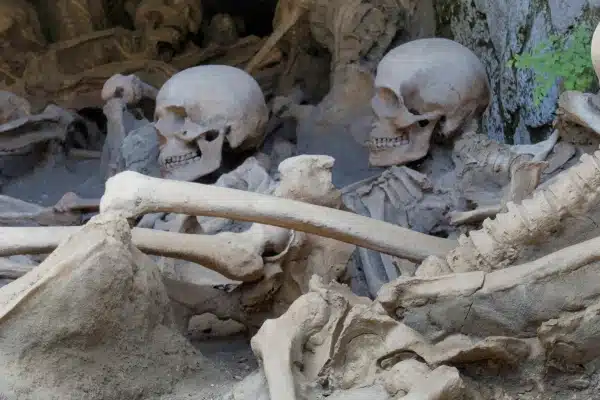
Thermal Baths
The thermal baths in Herculaneum date back to the 1st Century BC and have separate areas for men and women.
The private baths were exclusive to the city’s elite, who paid to use them like a club.
On the other hand, the public baths were used by merchants, sailors, and others.
A large, still-intact furnace heated the water.
The baths have changing rooms, hot and cold bathing areas, and storage areas for clothing, all decorated with mosaic patterns and depictions of sea creatures.
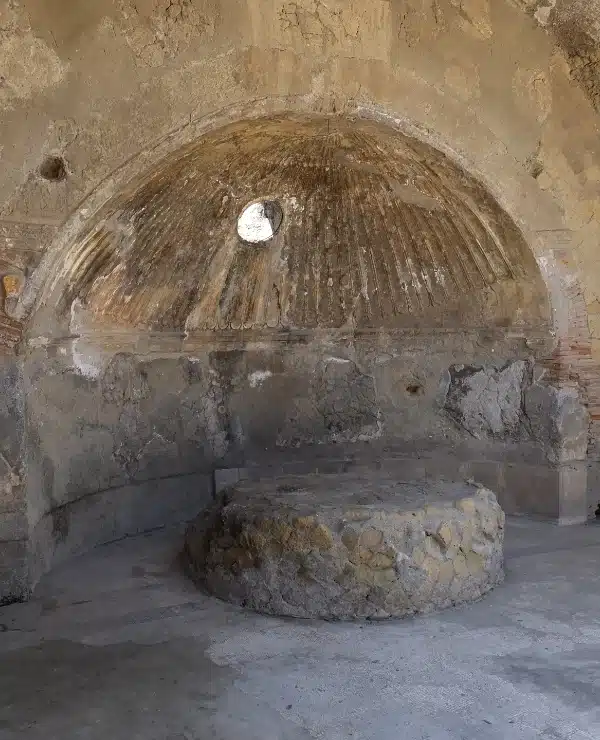
The House of Wooden Partitions
The House of Wooden Partitions was once used as a private meeting place.
The partition includes hooks for hanging lanterns and folding panels with brass handles.
A cistern inside the floor’s center collects rainfall from the hole in the ceiling, and behind it, you’ll see a sizeable public office called a triclinium for public meetings.
It still has the original wooden doors, frescoes on the walls, and mosaics on the floor.
There are bedrooms or cubicles; one has an original wooden bed with iron legs (the iron legs have been reproduced).
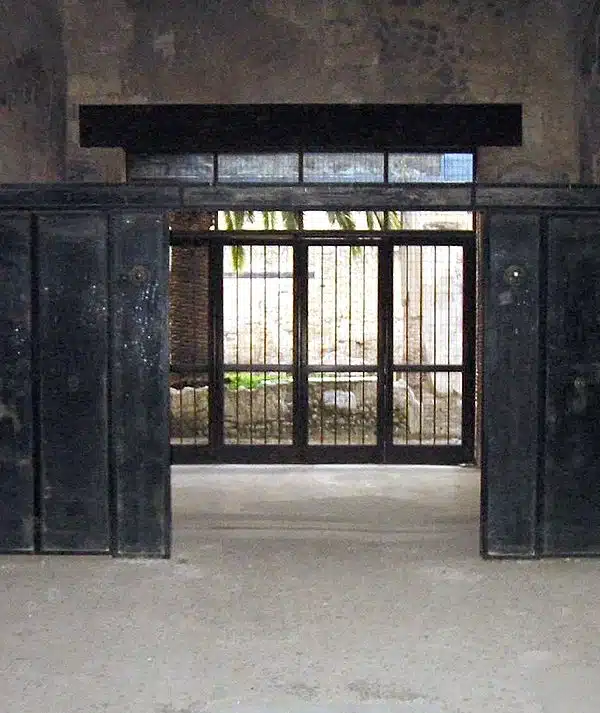
House of Neptune
The House of Neptune and Amphitrite is a work of art showcasing some of the town’s most notable mosaics and wall paintings.
It exemplifies the owner’s skill in transforming a relatively compact space into a grand Roman townhouse.
The Neptune House is a dedicated tribute to the gods Neptune and his wife, Amphitrite.
It has an alcove, a courtyard, and the remains of a once-flowing fountain.
Its beautiful glass mosaic with marble marks designed with intricate patterns and vibrant colors, truly fascinates.
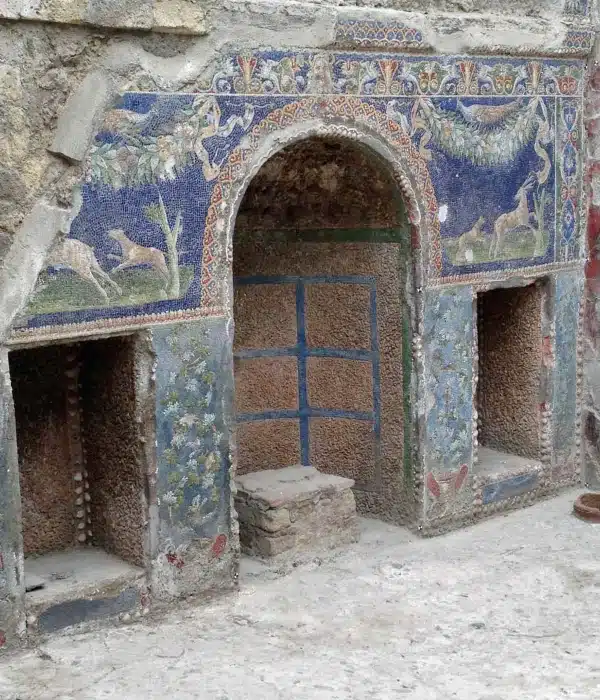
The Villa of the Papyri
The Villa of the Papyri was once a luxurious residence in ancient Herculaneum.
It earned its name from discovering remarkable carbonized papyrus scrolls (mysterious sheets of illegible text.
The scrolls miraculously survived being burned by volcanic ash and are considered the remaining antiquity library.
Alongside these scrolls, the villa features an impressive array of art, including marble sculptures and frescoes.
It is the most extensive collection of Greek and Roman sculptures in one location.
It is thought to have a garden, a vineyard, and a direct sea view from its terraces spanning 250 meters of coastline.
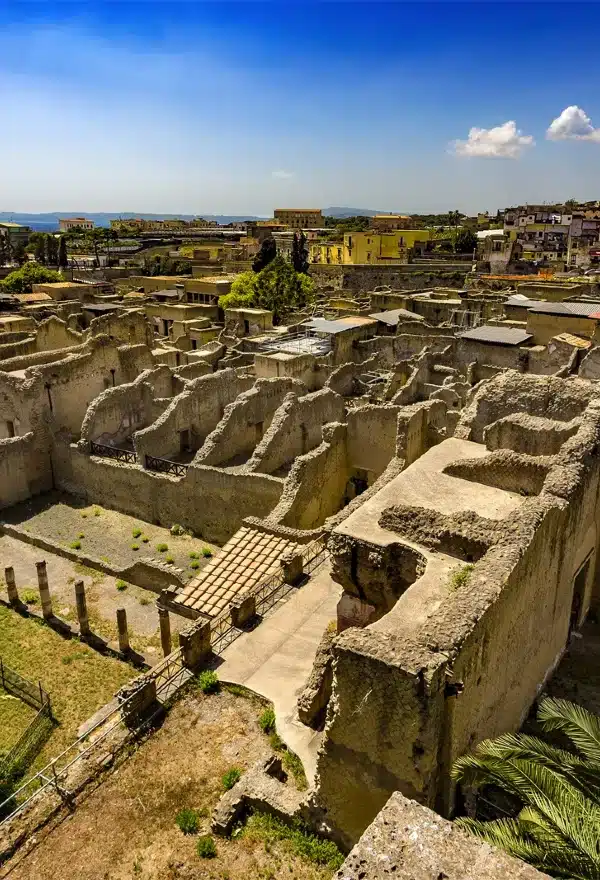
The Hall of the Augustales
It is the only public area excavated and it was a hub for the Roman cult of Augustus.
It features the original marble floor, wall artwork, and incredible frescoes.
One of the most impressive frescoes depicts Hercules, Juno, Jupiter (represented by a rainbow), and Minerva.
Devotees of Emperor Augustus’ cult met here for their meetings and marked it as their official seat.
The hall has various columns, arches, and an opening in the roof that lights up the room.
It also features famous frescoes portraying Hercules wrestling the Achelous and entering Mount Olympus, accompanied by Juno and Minerva.

The House of the Deer
A luxurious waterfront structure believed to be the residence of Q. Granius Verus.
This belief stems from discovering a loaf of bread bearing his seal inside the house.
It contains two floors, an expansive courtyard, and a seaside garden adorned with deer statues.
Inside, you’ll discover intricate mosaics, frescoes, and marble chip flooring, some displayed in the on-site museum.
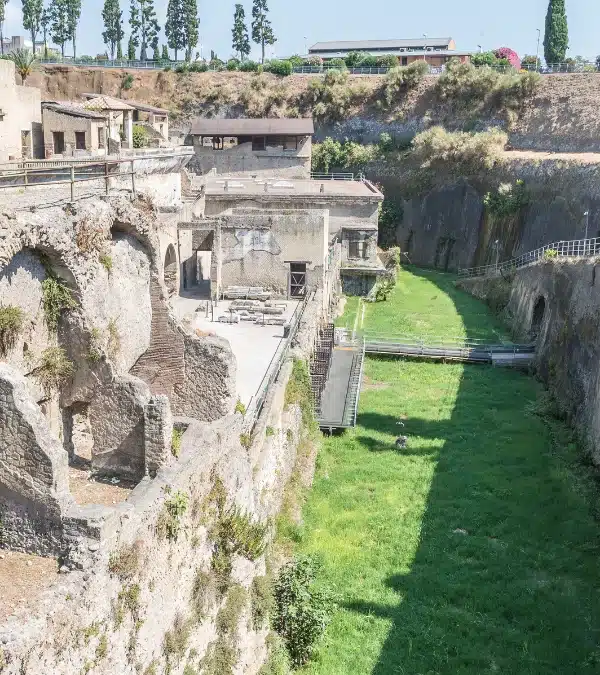
Samnite House
The House is one of Herculaneum’s oldest aristocratic residences.
It is thought to have been built in the 2nd Century BC.
At the time of Mount Vesuvius’ eruption, it was already around 300 years old.
The House is renowned for its Greek-influenced atrium, decorated in the Fourth Style.
Visitors can also admire its intricate flooring, a rainwater pool, and the enduring columns and pillars that still grace its structure.
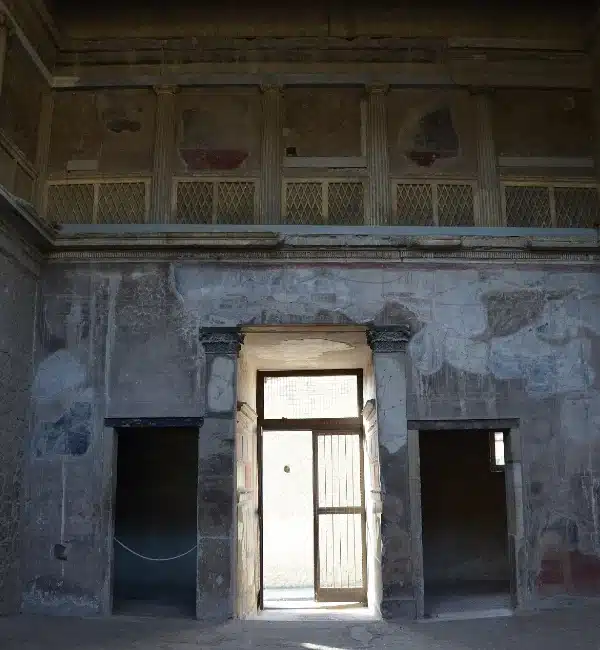
Book a guided tour to explore the rich history of Herculaneum and how life was before the tragic volcanic eruption with an archeologist.
Plan your Visit with these three simple steps:
Featured Image: Deeepblue from Getty Images (Canva)
